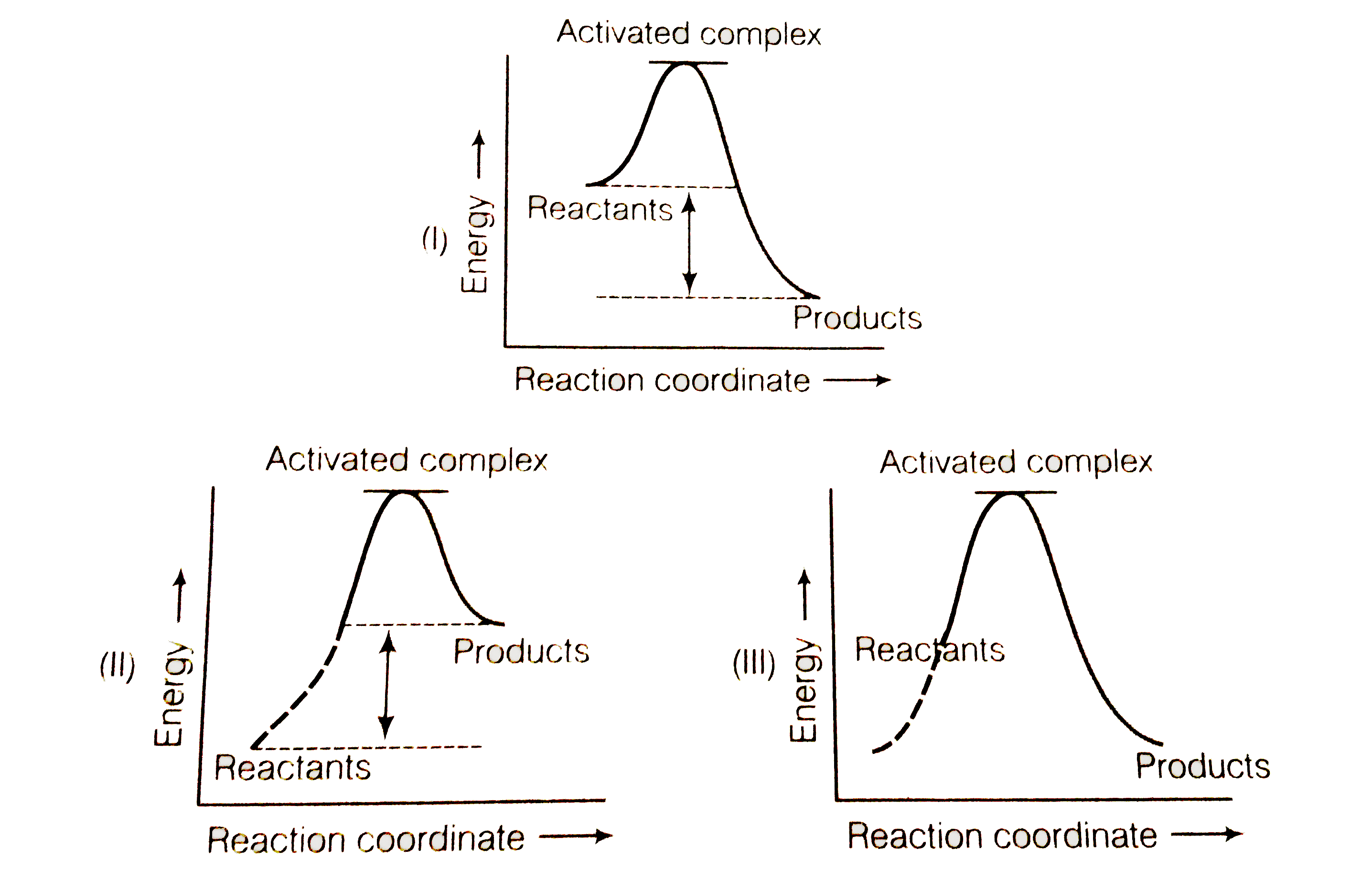Which one of the following is an exothermic reaction?
N2(g)O_(2)(g)+180.8kJ→2NO(g)
N2(g)+3H2(g)−90kJ→2NH3(g)
C(g)+H2O(g)→CO(g)+H2(g)−131.1kJ
C(graphite)+2S(s)→CS2(l)+91.9kJ
The correct Answer is:B, D
To determine which of the given reactions is an exothermic reaction, we need to analyze each option based on the heat change associated with the reaction. An exothermic reaction is characterized by the release of heat, which is indicated by a negative value for the enthalpy change (ΔH).
1. Understand Exothermic and Endothermic Reactions:
- Exothermic reactions release heat to the surroundings, resulting in a negative enthalpy change (ΔH < 0).
- Endothermic reactions absorb heat from the surroundings, resulting in a positive enthalpy change (ΔH > 0).
2. Analyze Option 1:
- Reaction: Reactant + O2 → 2NO
- Given: The enthalpy change is positive (ΔH > 0).
- Conclusion: This is an endothermic reaction. (Incorrect)
3. Analyze Option 2:
- Reaction: NO2 + H2 → 2NH3
- Given: The enthalpy change is negative (ΔH = -90 kJ).
- Conclusion: This is an exothermic reaction. (Correct)
4. Analyze Option 3:
- Reaction: C + H2O → CO + H2
- Given: The enthalpy change is negative (ΔH < 0).
- Conclusion: This is also an exothermic reaction. (Correct)
5. Analyze Option 4:
- Reaction: Carbon graphite + Sulfur → CH2
- Given: The enthalpy change is not specified, but if it were exothermic, it would typically be indicated by a negative value.
- Conclusion: Without specific information, we cannot definitively classify this reaction.
Final Answer:
- The exothermic reactions from the options provided are Option 2 (NO2 + H2 → 2NH3) and Option 3 (C + H2O → CO + H2).
- Exothermic reactions release heat to the surroundings, resulting in a negative enthalpy change (ΔH < 0).
- Endothermic reactions absorb heat from the surroundings, resulting in a positive enthalpy change (ΔH > 0).
- Reaction: Reactant + O2 → 2NO
- Given: The enthalpy change is positive (ΔH > 0).
- Conclusion: This is an endothermic reaction. (Incorrect)
- Reaction: NO2 + H2 → 2NH3
- Given: The enthalpy change is negative (ΔH = -90 kJ).
- Conclusion: This is an exothermic reaction. (Correct)
- Reaction: C + H2O → CO + H2
- Given: The enthalpy change is negative (ΔH < 0).
- Conclusion: This is also an exothermic reaction. (Correct)
- Reaction: Carbon graphite + Sulfur → CH2
- Given: The enthalpy change is not specified, but if it were exothermic, it would typically be indicated by a negative value.
- Conclusion: Without specific information, we cannot definitively classify this reaction.
- The exothermic reactions from the options provided are Option 2 (NO2 + H2 → 2NH3) and Option 3 (C + H2O → CO + H2).
Topper's Solved these Questions
- BOOK - VMC MODULES ENGLISHCHAPTER - THERMOCHEMISTRYEXERCISE - LEVEL-265videos
THERMOCHEMISTRY
- BOOK - VMC MODULES ENGLISHCHAPTER - THERMOCHEMISTRYEXERCISE - JEE MAIN (ARCHIVE)20videos
THERMOCHEMISTRY
- BOOK - VMC MODULES ENGLISHCHAPTER - THERMOCHEMISTRYEXERCISE - LEVEL - 0 Long Answer Type13videos
THERMOCHEMISTRY
- BOOK - VMC MODULES ENGLISHCHAPTER - THEORY OF SOLUTIONSEXERCISE - JEE Advanced (Archive)31videos
THEORY OF SOLUTIONS
- BOOK - VMC MODULES ENGLISHCHAPTER - THERMODYNAMICSEXERCISE - JEE ADVANCED (ARCHIVE)44videos
THERMODYNAMICS
Similar Questions
Knowledge Check
- Question 1 - Select One
Which of the following reactions is not exothermic ?
ACH3−Cl+CH3–CH2→CH4+CH3–CH2−ClBCH3−Cl+(CH3)3C−H→CH4+(CH3)3–C−ClCCH3−Cl+CH2=CH−CH3→CH4+CH2=CH−CH2−ClDCH3−Cl+CH2=CH2→CH4+CH2=CHCl - Question 2 - Select One
Which one of the following is a possible nuclear reaction ?
A.510B+.42He→.137N+.11HB.2311Na+.11H→.2010Ne+.42HeC.23993Np→.23994Pu+.−1β0+¯vD.117N+.11H→.126C+.−1β0+¯v - Question 3 - Select One
Which of the following reactions is most exothermic ?
A B
B C
C D
D
Which of the following is/are exothermic process?
View SolutionWhich one of the following is a redox reaction ?
View Solution
Which one of the following is true about this reaction ?View SolutionWhich of the following is the only exothermic oxide of chlorine?
View SolutionWhich of the following graph represents exothermic reaction ?
 View Solution
View Solution

